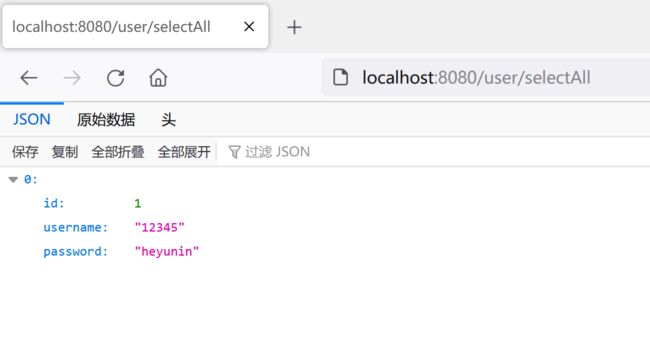hibernate入门,springboot整合hibernate
Mybatis和Hibernate是我们常用的两大ORM框架,这篇文章主要介绍hibernate的使用,如何通过springboot整合hibernate,实现简单的crud功能。
添加依赖
首先,需要创建一个springboot项目,这里就取名为hibernate。项目创建完成后,修改pom.xml,添加项目必要的的依赖
4.0.0
org.springframework.boot
spring-boot-starter-parent
2.3.4.RELEASE
com.example
hibernate
0.0.1-SNAPSHOT
1.8
8.0.28
1.1.21
1.18.22
org.springframework.boot
spring-boot-starter-web
org.springframework.boot
spring-boot-starter-test
test
org.projectlombok
lombok
${lombok.version}
mysql
mysql-connector-java
${mysql.version}
com.alibaba
druid
${druid.version}
org.springframework.boot
spring-boot-starter-data-jpa
org.hibernate
hibernate-core
org.springframework.boot
spring-boot-maven-plugin
配置文件
然后修改配置文件application.yml
server:
port: 8080
servlet:
context-path: /
spring:
# 数据源
datasource:
username: root
password: root
url: jdbc:mysql://localhost:3306/hibernate
driver-class-name: com.mysql.cj.jdbc.Driver
type: com.alibaba.druid.pool.DruidDataSource
# 只返回不为null的数据
jackson:
default-property-inclusion: non_null
jpa:
database: MYSQL
show-sql: true
hibernate:
ddl-auto: update
properties:
hibernate:
dialect: org.hibernate.dialect.MySQL8Dialect
database-platform: org.hibernate.dialect.MySQL8Dialect
logging:
level:
springfox: error
com.example.hibernate: debug完成以上工作,就可以开始使用hibernate了。
实体类
首先创建一个实体类User:在项目根目录下创建entity包,在entity包下创建一个类User
package com.example.hibernate.entity;
import lombok.Data;
import javax.persistence.*;
import java.io.Serializable;
/**
* @author heyunlin
* @version 1.0
*/
@Data
@Entity
@Table(name = "user")
public class User implements Serializable {
private static final long serialVersionUID = 18L;
@Id
@GeneratedValue(strategy = GenerationType.AUTO)
private Integer id;
/**
* 用户名
*/
@Column(name = "username")
private String username;
/**
* 密码
*/
@Column(name = "password")
private String password;
}其中@Entity表示这是一个JPA实体类,@Table(name = "user")指定实体类对应数据库表名为user,@Id表示数据库的标识字段,也就是主键,@Column指定对应数据库字段。
持久层
接下来,创建持久层对象
在项目根目录下创建dao包,在entity包下创建一个UserDao接口,然后继承JpaRepository接口,该接口有两个参数化类型,第一个表示实体类的类型,第二个表示主键的类型,也就是@Id注解标注的字段的类型,这里是Integer。
package com.example.hibernate.dao;
import com.example.hibernate.entity.User;
import org.springframework.data.jpa.repository.JpaRepository;
import org.springframework.stereotype.Repository;
/**
* @author heyunlin
* @version 1.0
*/
@Repository
public interface UserDao extends JpaRepository {
} 然后在启动类上面使用@EnableJpaRepositories注解
package com.example.hibernate;
import org.slf4j.Logger;
import org.slf4j.LoggerFactory;
import org.springframework.boot.SpringApplication;
import org.springframework.boot.autoconfigure.SpringBootApplication;
import org.springframework.data.jpa.repository.config.EnableJpaRepositories;
/**
* @author heyunlin
* @version 1.0
*/
@SpringBootApplication
@EnableJpaRepositories
public class HibernateApplication {
private static final Logger logger = LoggerFactory.getLogger(HibernateApplication.class);
public static void main(String[] args) {
if (logger.isDebugEnabled()) {
logger.debug("启动hibernate...");
}
SpringApplication.run(HibernateApplication.class, args);
}
}业务层
接下来创建业务层,在项目根目录下创建service包,在service包下创建一个UserService接口
package com.example.hibernate.service;
import com.example.hibernate.entity.User;
import java.util.List;
/**
* @author heyunlin
* @version 1.0
*/
public interface UserService {
/**
* 查询全部用户
* @return List
*/
List selectAll();
} service包下面创建impl包,在impl包下创建UserService的实现类,调用持久层userDao的方法
package com.example.hibernate.service.impl;
import com.example.hibernate.dao.UserDao;
import com.example.hibernate.entity.User;
import com.example.hibernate.service.UserService;
import org.springframework.beans.factory.annotation.Autowired;
import org.springframework.stereotype.Service;
import java.util.List;
/**
* @author heyunlin
* @version 1.0
*/
@Service
public class UserServiceImpl implements UserService {
private final UserDao userDao;
@Autowired
public UserServiceImpl(UserDao userDao) {
this.userDao = userDao;
}
@Override
public List selectAll() {
return userDao.findAll();
}
} 功能测试
完成以上任务之后,启动项目
可以看到,hibernate在启动过程中自动根据User实体类帮我们创建了user表。
接着我们往表里插一条数据用来测试
INSERT INTO user(id, username, password) VALUES (1, 'heyunin', '12345');然后访问http://localhost:8080/user/selectAll获取全部用户
添加、修改和删除的方法就不测试了,按照同样的步骤在service层和controller层创建对应的方法就可以了。
好了,文章就分享到这里了,看完如果觉得对你有所帮助,不要忘了点赞+收藏哦~

